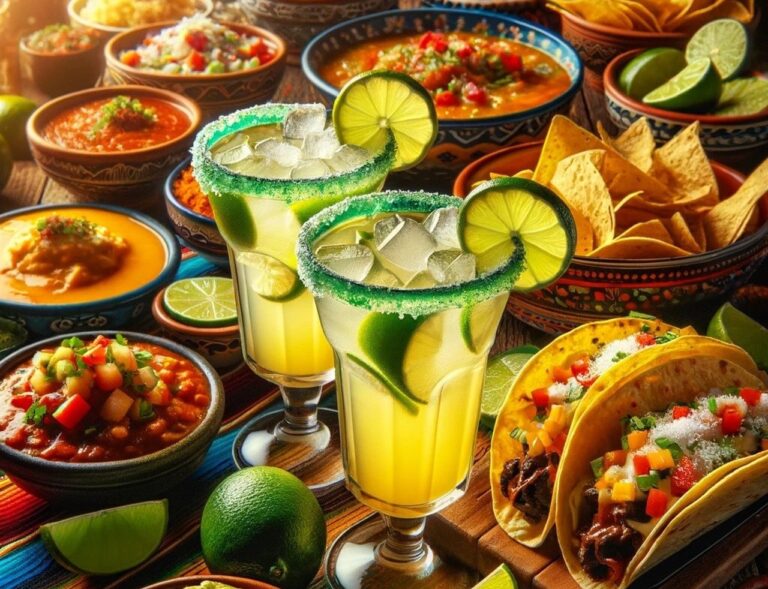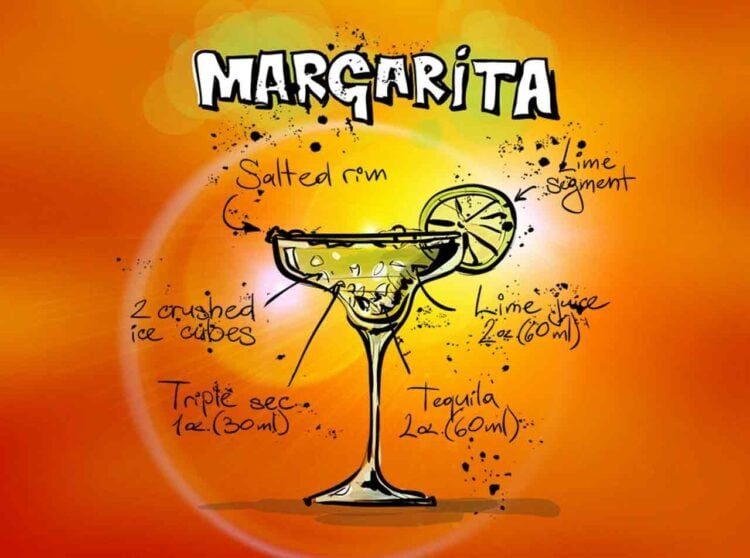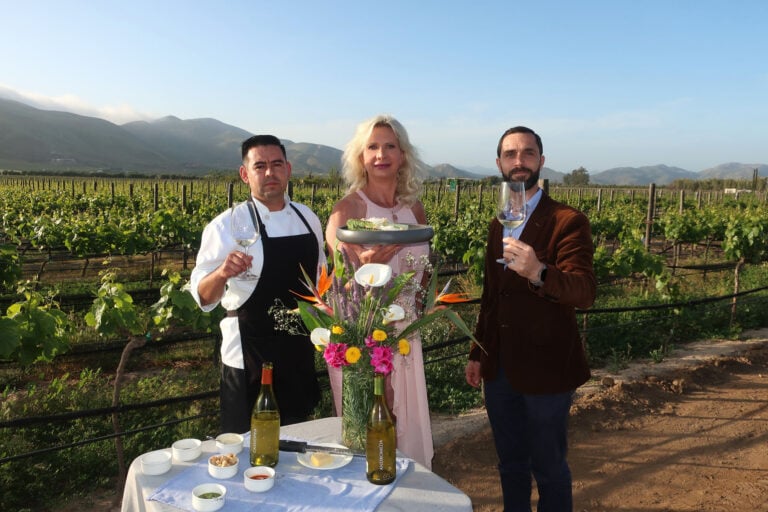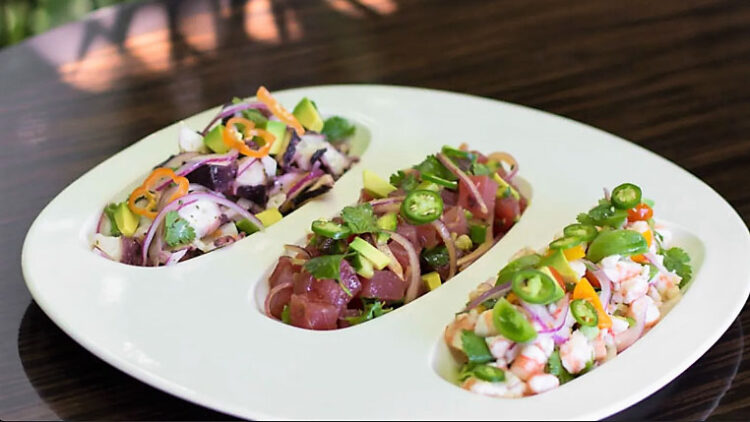Wine of the Week: 10-Year Tawny Port, Ramos Pinto, Quinta de Ervamoira | Douro Valley, Portugal
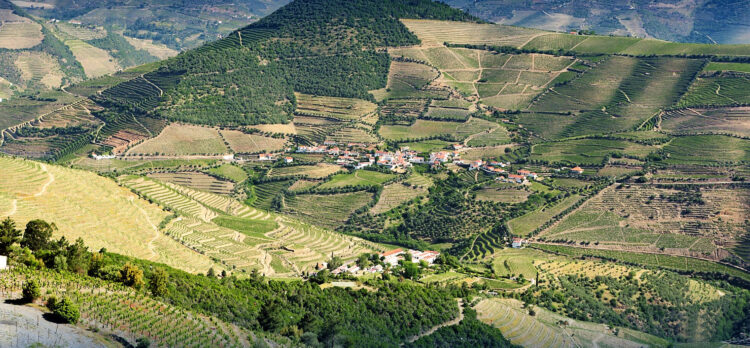
Tawny Port | May 16, 2022
> ABOUT PORT PRODUCTION
Port is a very versatile and interesting fortified wine from Portugal whose history goes back to the seventeenth and eighteenth centuries when the British and the French fought endless conflicts with each other. The British used their superiority at sea to blockade French ports and thus weaken the French economy. However, the major disadvantage of this strategy was that there could be no export of French wine to Great Britain. The British therefore had to come up with a solution for their wine supply. They looked to their ally Portugal for that. Unfortunately, it was not so easy to transport wine in those days. By the time the wine from Portugal arrived in Britain it had gone bad. The solution? Add brandy! This combination turned out to be brilliant: the British thought this somewhat sweet and fruity drink was fantastic and it became a great success.
The grapes for the production of port come from the Douro Valley in Portugal. This area is suitable for viticulture due to the Mediterranean microclimate with very warm summers and cold and rainy winters. The grapes grow on the steep slopes along the Douro River. Walls have been built on these slopes, creating terraces on which grapes are grown. The Douro Valley is about 160 miles long and is divided into three distinct regions. The easternmost region is the Douro Superior, which borders Spain. In the middle of the valley is the Cima Corgo and the westernmost region is Baixo Corgo. Roughly speaking, you can say that the further east you get into the area, the hotter and drier it gets.
Not only is the climate in the Douro Valley special, there is also something to be said about the soil because it is important for the production of port. The rocky subsoil is called xisto (schist). The schist absorbs a lot of heat during the day and gradually releases it during the night, which ensures a stable temperature and good ripening of the grapes. Because the schist retains water, vine growing is still possible despite the enormous summer heat. The grapes have to root very deeply to reach the water: that means hard work and relatively little yield to make wine.
The start of port production looks the same as with regular wine. The grapes are harvested and pressed late in the season (which is possible thanks to the long and hot summers). In the past, pressing in the Douro Valley was quite a celebration where people, arm in arm in rows, squeezed the grapes with their feet. There are still quintas (wine domaines) where this method is used, but often the pressing process has been mechanized.
After pressing, the must is left to ferment for a few days, so that the first sugars are converted into alcohol. The further fermentation proceeds differently than with normal wine. As mentioned before, the drink is made by adding brandy to wine. This addition stops the fermentation process. The addition of brandy takes place before the fermentation is completely finished, so that not all sugars have yet been converted into alcohol. Much of the natural sweetness of the grapes is therefore retained in the drink.
The port obtained this way is then kept in oak or steel tanks so that it can mature further. Some ports are left in barrels for a long time for aging and others are bottled to mature further in the bottle. In any case, the port must mature for at least two years before it can be marketed.
The Douro Valley has a huge variety of grape varietals. The following grapes are the main grapes used for red port:
• Touriga Nacional: The most famous and beloved grape varietal from the Douro Valley. It provides structure, tannins and aroma.
• Touriga Franca: Not as firm as the Touriga Nacional but very aromatic. This is the most widely planted grape in the Douro Valley.
• Tinta Barroca: A grape varietal that adds quite a lot of sugars to the wine, which can be converted into a slightly higher alcohol level during fermentation. It provides a lot of ripe fruit aromas and flavors in the wine.
• Tinta Roriz: In Spain this grape varietal is called Tempranillo and is therefore very well known. In port, this grape mainly adds color.
White port is also made, which is produced from grape varietals other than red port. Some famous ones are Malvasia Fina, Donzelinho, Mourisco, Códega, Donzelinho Branco and Gouveio.
Below are the different types of port:
1. Ruby
This style is the most produced and you often see it in the store. It is one of the most popular port varieties. The name comes from the dark, ruby red color of this drink. Ruby does not age for more than three years in wooden or stainless steel vats. In ruby you mainly taste a lot of fruit such as blackberries and raspberries. Ruby is not meant to be kept for too long.
2. Vintage
This is a special port type because this (ruby) port is made from the grapes of a specific year. Vintage port matures for only two years in a wooden barrel and is then bottled. This is to show the character of the specific harvest year as best as possible. You can keep this wine for a very long time and it will come into its own over time.
3. LBV – Late Bottled Vintage
This (ruby) port is somewhat similar to the vintage because this wine is also made from grapes from a specific harvest year but it remains in the wooden barrels longer: four to six years. This makes late bottled vintage port a bit softer and easier to drink at a younger age. Unlike a vintage port, an LBV is made to drink relatively young, while it is better to drink a vintage after 20 years.
4. Tawny
The name of this port variety also comes from the color. Literally translated: yellow-brown. The color has a bit of rust. Because tawny ages in smaller wooden barrels, there is more interaction with oxygen and the wine oxidizes to a lighter color. Tawny port is often drunk (much) older than ruby. You sometimes see 10, 20 or 40 years on the bottles. This does not mean that every drop in the bottle is really that old but it is a reference to the average age of the wine in the bottle. The older they are, the lighter in color they become and the aromas and flavors will have less and less fruit and the wine will be more nutty and spicy in taste.
5. Colheita
Not only ruby port has special variants, Colheita is a variant of the tawny port. Colheita Port is made from grapes from a single harvest year and the wine has remained in wooden barrels until upon bottling. Colheitas are usually offered on the market after about 10 years.
6. White
White port comes in very different varieties, from dry to sweet. Usually white port is drunk young and it is not made to keep very long. The sweeter white port goes very well with desserts.
> ABOUT THE WINERY
Founded in 1880 by brothers Adriano and Antonio, Ramos Pinto’s history has been marked by a balance between innovation and respect for tradition. In addition to producing wines of exceptional quality, the House is known for its knowledge of terroir and for its pioneering viticulture. Through its strict production policy, the selection of the best Douro grape varietals and the systematic technical and technological research, the House is positioned as the reference for the production of superior quality wines in Portugal. Today, descendants of the founders carry on the heritage of producing extraordinary ports and still wines.
Ramos Pinto has four estates in the Douro Valley: Quinta do Bom Retiro and Quinta da Urtiga, located in Cima Corgo, as well as Quinta dos Bons Ares and Quinta de Ervamoira, in the Douro Superior. These four quintas cover an area of 890 acres. Committed to improving its bond with nature and the environment, Ramos Pinto is working towards this achievement by implementing organic farming and increasing biodiversity in the vineyard. This is a legacy which the House is proud to leave to future generations.

Origin: Douro Valley, Portugal
Varietals: Touriga Nacional, Touriga Franca, Tinta Roriz, Tinta Barroca
Sustainability: sustainable organic
Suggested retail price: $42.00
ABV: 20%
The wine has a dark orange brown color with ruby hues at the rim. The rich and complex bouquet comprises dried plum, roasted nuts, Asian spices, cacao and cedar box. The palate delivers flavors of chocolate, ripe red fruit, coffee and nuts. Sun-drenched but keeping good acidity and finishing long and complex.
Suggested food pairings: as an apéritif (slightly chilled), cheeses, after dinner with chocolate, crème brûlée, crème caramel, other cream based desserts, desserts made with dried fruits and nuts.
> For more information, visit the Ramos Pinto official website.

